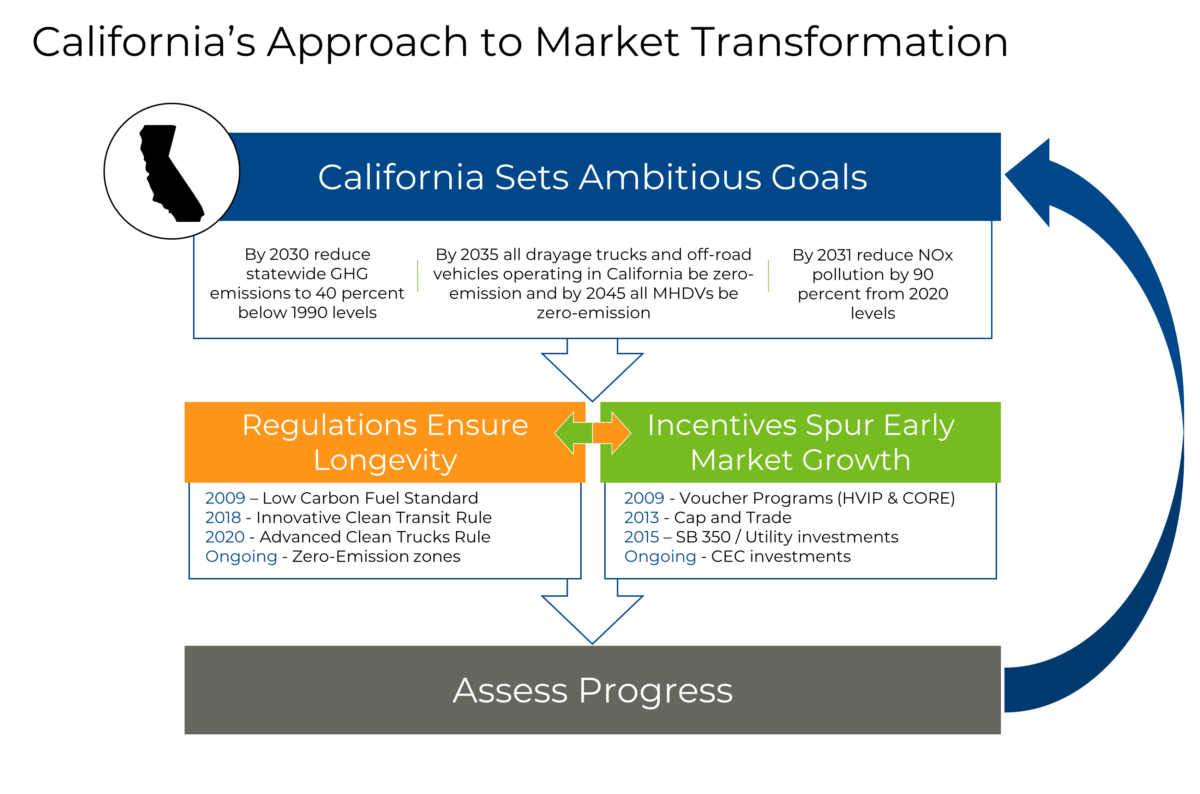This paper summarizes California’s ongoing efforts to improve air quality, fight climate change, and spur transportation sector innovation by creating a supportive ecosystem for ZECV deployment through multiple aligned policies, regulations, incentives, infrastructure investments, and pilot projects. This approach has enabled California to steadily increase both its policy ambitions and market readiness for ZECV deployment – leading to the first-of-its-kind Advanced Clean Trucks (ACT) regulation adopted in June 2020, requiring the the sale of zero-emission medium- and heavy-duty vehicles (ZE-MHDVs) beginning with Model Year 2024, and Governor Gavin Newsom’s subsequent Executive Order N-79-20, establishing the goal that 100% of sales of new passenger vehicles be zero-emission by 2035, and that 100% of MHDVs be zero-emission by 2045 for all application where feasible, and by 2035 for drayage trucks.
As major policy achievements, these announcements are part of a systematic approach to market transformation and technological innovation. As illustrated in the key graphic below, California’s multi-pronged strategy for approach to ZECV market transformation is driven by ambitious goals, strong regulations, and targeted and timebound incentives—all of which are continuously revised and strengthened to ensure its goals are met.

By understanding the progress California has made, this paper provides key lessons to other regions seeking to establish a strong policy ecosystem to accelerate ZECVs.
